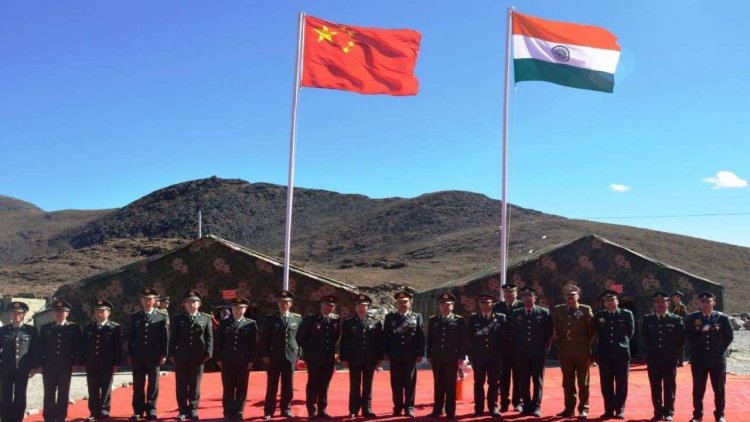India - China: Breakthrough in Corps Commander-Level Talks
STORIES, ANALYSES, EXPERT VIEWS

Ending a six month stalemate in border talks, India and China have agreed in principle to disengage at a key patrol point in eastern Ladakh even though other friction areas remain in the region. The agreement on PP17A was reached during the 12th round of Corps Commander-level talks on 31 July. The meeting, which was part of a series of measures to resolve the 15-month standoff in Ladakh, was held on the Indian side of the Chushul-Moldo border.
China has agreed to step back from PP17A, also known as the Gogra Post, but is “not inclined” to move back from PP15 or the Hot Springs area. “Modalities are being worked out. But on PP17A, there is an agreement to disengage. On PP15, China continues to insist that it is holding its own side of the Line of Actual Control (LAC),” an official said.
The proposals are with the government, and details of how the troops will move are being discussed, sources said. The movement is expected to start within the next couple of days.
The issue of Chinese ingression in the Depsang Plains and Charding-Ninglung Nallah (CNN) in the Demchok area were not discussed, sources said. But the latest breakthrough is significant, they said, considering the stalemate since February.
Joint statement
A joint statement issued Monday said the two sides had a “candid and in-depth exchange of views on resolution of remaining areas related to disengagement along the Line of Actual Control in the Western Sector of India-China border areas”.
It said: “The two sides noted that this…meeting was constructive, which further enhanced mutual understanding. They agreed to resolve these remaining issues in an expeditious manner in accordance with the existing agreements and protocols and maintain the momentum of dialogue and negotiations.”
The statement said the two also agreed that in the interim, “they will continue their effective efforts in ensuring stability along the LAC in the Western Sector and jointly maintain peace and tranquility”.
Platoon-sized units have been present on the Indian side of the LAC, at PP15 and PP17A, since the Galwan clashes of June last year, but the forces are no longer in an “eyeball to eyeball” confrontation. In February, the two sides had disengaged from the north and south banks of Pangong Tso, where troops and tanks from both sides were barely a few hundred metres apart at some locations.
Xi Jinping’s Tibet visit: militarily significant
Meanwhile, Chinese President Xi Jinping visited Tibet on July 21-23. This was his third to the region. Indian analysts see significance in the visit as it has a bearing on the situation along the LAC.
The visit to Nyingchi, his first stop during the tour, writes Jayadeva Ranade (President, Centre for China Analysis and Strategy) “is of significance for India. Official Chinese maps include most of India’s state of Arunachal Pradesh — referred to as southern Tibet by the Chinese —within the administrative boundaries of the Nyingchi Prefecture.
“Relevant, therefore, is Xi Jinping’s insistence on the ‘rejuvenation’ of the Chinese nation and recovering territories claimed to have been lost by the imposition of unequal treaties by hostile foreign powers.”
Nyingchi has, according to Ranade “additionally, emerged as a strategically important military transit station for highways and railways connecting Tibet with the Chinese Mainland. Once completed, the high-speed Chengdu-Lhasa railway will reduce travelling time from the present 30 hours to only 10.”
Of particular importance are Xi Jinping’s remarks to an estimated 400 PLA officers at a separate meeting in Lhasa on July 23 “because he had till now not referred publicly at all to the situation on the LAC. Neither has it figured as an item on the agenda of any of the Politburo or Politburo Standing Committee meetings held since May 2020……Other than Chinese Foreign Minister Wang Yi, no other senior Chinese leader has commented on the situation on the border since May 2020.”
Among the officers addressed by Xi Jinping, writes Ranade “were at least 281 officers of the PLA Army (Ground Force), and 29 PLA Air Force officers. In addition to three lieutenant-generals and 27 major-generals, the rest were colonels and above. No representatives from the PLA Rocket Force and PLA Strategic Support Force were noticed.
“Seated with Xi Jinping and CMC Vice-Chairman General Zhang Youxia in the front row were the new Commander of the PLA Western Theatre Command (WTC) General Xu Qiling, WTC Political Commissar General Li Fengbiao, Political Commissar of the Tibet Military Region Lt-General Zhang Xuejie, and the Commander of the Tibet Military Region Lt-General Wang Kai. The new Commander of the WTC PLA Army (Ground Forces) and the commanders of the military sub-districts bordering India were probably present.”
India needs to be very wary, says Ranade “as the excerpts of Xi Jinping’s speech telecast by China Central Television indicate no plans to lessen tension along the LAC….”
















